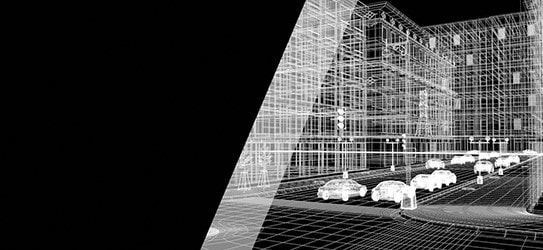Applying Building Information Modelling (BIM) strategies in infrastructure projects has become more and more significant when it comes to project management and asset management. The ISO 19650 standard and the Dubai BIM guidelines provide effective frameworks for BIM integration. This blog has offered real life tips on how to apply these standards in your projects based on “BIM Guidelines for Infrastructure” from the Municipality of Abu Dhabi City.
ISO 19650 refers to an international standard touching on the management and documentation of information on buildings and civil engineering structures, specifically building information modelling. It comprises of several parts, observing how information is managed in the delivery and operational stages of assets using Building Information Modeling.
Compared to such guidelines as British BIM level 2, the Dubai BIM guidelines are developed being in mind the specifics of the region and the construction industry within it. These guidelines are intended to provide with improvements in terms of productivity and outcome when it comes to project delivery and asset management for Dubai.
ISO 19650 and Dubai BIM both testify cooperate delivery and asset management and these concepts result from structured and digitized information management. However, there are some key differences:
Scope: ISO 19650 is an international standard for use across the international markets, while Dubai BIM is specific to the geographic region of Dubai.
Flexibility: ISO 19650 represents a conceptual approach that reflects a set of adaptable methodology to different types of projects and sizes, while Dubai BIM describes a set of rules that directly address the context of Dubai.
Implementation: Whereas ISO 19650 is clear about the necessity of a central data hub and integrated, cooperative processes, Dubai BIM underlines the need for standardisation and local benchmarks.
When implementing either standard, consider the following practical insights:
1. Stakeholder Engagement
Involve all those interested in the process right from the beginning up to the point when there is full comprehension of the BIM requirements. This includes the owners, architects, builders and the managers of the facilities where the equipments are installed.
2. Common Data Environment (CDE)
Put in place an efficient CDE that enhances the exchange of information and collaborative processes. The CDE should align itself with the processes described in the chosen standard and guarantee safety and effectiveness in information processing.
3. Training and Competency
Education is a must to ensure that all employees who are involved in BIM implementation are well equipped with the use of BIM tools as well as standards for implementation. This is important as it ensures that the different stages of the project conform to the established standard and guidelines.
4. Documentation and Standards
Ensure that you establish project documentation, including the BEP, so that they cover the processes and compliance of roles and responsibilities. As for the rest of the standards, it is recommended to continue following the rules of naming conventions, level of detail (LOD) and the required information.
5. Technology and Tools
Integrate advanced Building Information Modeling tools and technologies in the construction projects. This includes clash detection software, 4D and 5D modeling, and 4Dimensional printing.

When implementing either standard, consider the following practical insights:When implementing either standard, consider the following practical insights:
Step 1: Stakeholder Engagement
Involve all the stakeholders and make sure they accept the BIM requirements all through out. This incorporates the clients, designers, contractors as well as the facility managers.
Step 2: Common Data Environment (CDE)
Organise a well-designed CDE as an information exchange and communication tool. The CDE should cover the workflows outlined in the selected standard, and guarantee optimal as well as secure data management.
Step 3: Training and Competency
Promote human resource development for all individuals in the organization so that they will be capable of operating BIM equipments and adhere to the standards. This is important particularly when doing the work to ensure that the project follows the required standard.
Step 4: Documentation and Standards
Assign a myriad of procedures like BIM Execution Plans (BEP) to detail processes, authorities, and initiatives. Comply with the standards on how different pieces of information are named, at what level of detail (LOD), and the required contents.
Step 5: Technology and Tools
Integrate the right and modern BIM tools and technology in order to improve the project outcomes. This entails clash detect software applications, 4D and 5D modeling, and computer aided fabrication.
Step 1: Initial Setup
Implement the BIM framework, and ensure it meets compliance with the Dubai BIM directives. Organize the stakeholders by their roles in the implementation and management of the proposed system.
Step 2: Standardization
Create general documentation and guidelines for the documentation such as the BIM Execution Plan and Information Delivery Plan. This way, regional best practices as well as local, state, and national standards can also be met.
Step 3: Integration
Develop BIM technologies and tools into projects for better project completion. There is documentation of software that is used in design authoring, to support clash detection and 4D/5D modeling.
Step 4: Collaboration
Introduce communication protocols to ensure cooperation and include a CDE into the broader data management strategy. This means that all the stakeholders are on the same page and moving in the same direction as well as to ensure that information flows freely.
Step 5: Quality Control
It is important to ensure that compliance to the Dubai BIM guidelines is synthesized through strict quality control measures. It is common practice to do so and would therefore suggest that regular audits and reviews be done in order to ensure that standards are being maintained.
Assessment and Need:
Invitation to Tender:
Mobilization:
Collaborative Production of Information:
Information Model Delivery:
Project Close-Out:
Pre-Design:
Design Development:
Construction Documentation:
Construction:
Handover:
Operation and Maintenance:
Managing the Execution Process
Monitoring and Control:
Quality Assurance:
By closely controlling the activity, a project team is able to guarantee that its implementation of BIM is effective, fit for purpose and creates value at every phase of the project’s life cycle.
Information Requirements Definition:
Common Data Environment (CDE):
Structured Data Management: Apply the CDE on purpose to allow managing all project information in a systematic manner.
Access Control: Apply access and user privileges so that only authorized people can overwrite data in the database.
Validation and Verification:
Model Checking: Conduct both, AC and MC of BIM with EIR and BEP documentation on a consistent basis.
Clash Detection: Perform clash detection to deal with any issue in the model which causes conflict to avoid them.
Audits and Reviews:
Internal Audits: Many organizations undertake ISO 19650 implementation from which they need to implement internal audits to conform to the ISO requirements below;
Third-Party Reviews: It will help if organizations hire impartial third parties to carry out quality checks on your business to offer an honest opinion of your company.
Documentation and Reporting:
Quality Reports: Regular quality reports should be produced and contain information on the findings, incidents and solutions.
Issue Tracking: This means that to ensure that quality related issues are detected and addressed quickly, an issue tracking system should be used.
Quality Control Measures in Dubai BIM
Regulatory Compliance:
Local Standards: Make sure that all the BIM processes as well as the resulting deliverables meet the requirements and requirements of the United Arab Emirates state and specifically the Dubai jurisdiction.
Mandatory Checks: Conduct compliance check at specific project phase as may be required by law.
BIM Execution Plan (BEP):
Coordination and Collaboration:
Model Validation:
Training and Competency:

ISO 19650 standards should be adopted to support the sharing of information relating to a built asset through the use of BIM during the asset’s life cycle. These training programs are aimed at ensuring that professionals acquire those skills needed in order to implement the ISO 19650 standards.
ISO 19650 Certification Courses: These courses are meant to address principles and processes of information management as provided under Iso 19650. They often include modules on:They often include modules on:
BIM is already being extensively used in Dubai, and there are many training courses that cater to the region.
Dubai BIM Certification Programs: These programs are short and are intended to meet the regulations of Dubai as well as the industry practice of Dubai. They typically cover:
Individuals aspiring to practice BIM should embrace training and development as a tool to create added value. Whether one is studying the fine print of ISO 19650, learning about Revit in Revit BIM classes at the best Revit training center or pursuing an ISO 19650 Certification, practicing this crucial formula remains essential to exceling in the profession.
The use of BIM standards like ISO 19650 and Dubai BIM requires significant insight into their model and ways of applying the standards. While ISO 19650 can be regarded as an international perspective with a focus on information management and collaborative activities, Dubai BIM is characterized by more region-specific guidelines adapted to the Emirate’s construction market. Thus, following these standards, project teams are able to work more effectively without compromising on efficiency, minimising risks, improving communication, as well as guaranteeing the quality of the work performed. In conclusion, it is necessary to note that the adequate choice of BIM standard, as well as its successful implementation due to integration of the necessary training and further development, can allow for considerable reductions in expenses and achievement of the essential objectives of a given project.
